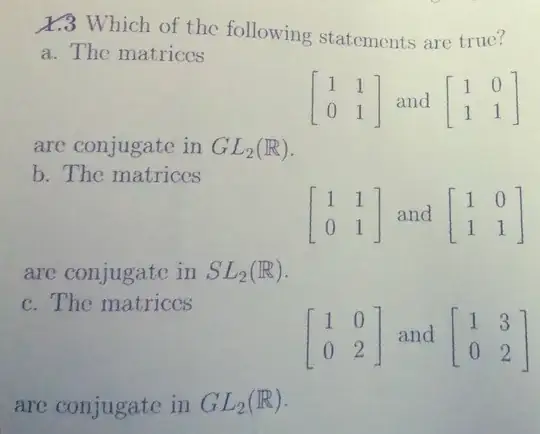All of the properties you've listed are sufficient for determining whether two matrices fail to be conjugate to each other, should they differ in one of those properties. However, there (in general) exist matrices in $GL_n$ that agree in all of those properties, but fail to be conjugate.
In fact, it turns out that 4 and 5 are sufficient in $GL_n$ when $n \leq 3$. However, that is not something one should assume without proof, and it is unlikely that this is given in your textbook.
A typical approach to your problem is as follows: for any matrix $A$, $A$ is conjugate to $A^T$ ($T$ meaning the transpose) in $GL_n(\Bbb R)$. Moreover, any elements that are conjugate in $GL_n$ are necessarily conjugate in $SL_n$ (why?).
For (c), the second matrix is conjugate to the first in $GL_2$ since any size $n$ square matrix with $n$ distinct eigenvalues is diagonalizable.
One criterion which is sufficient for determining conjugacy in $GL_n(\Bbb R)$ or $GL_n(\Bbb C)$ is as follows: $A$ and $B$ are conjugate if and only if $(A - \lambda I)^k$ and $(B - \lambda I)^k$ have the same rank for all $k = 1,2,3,\dots$.
